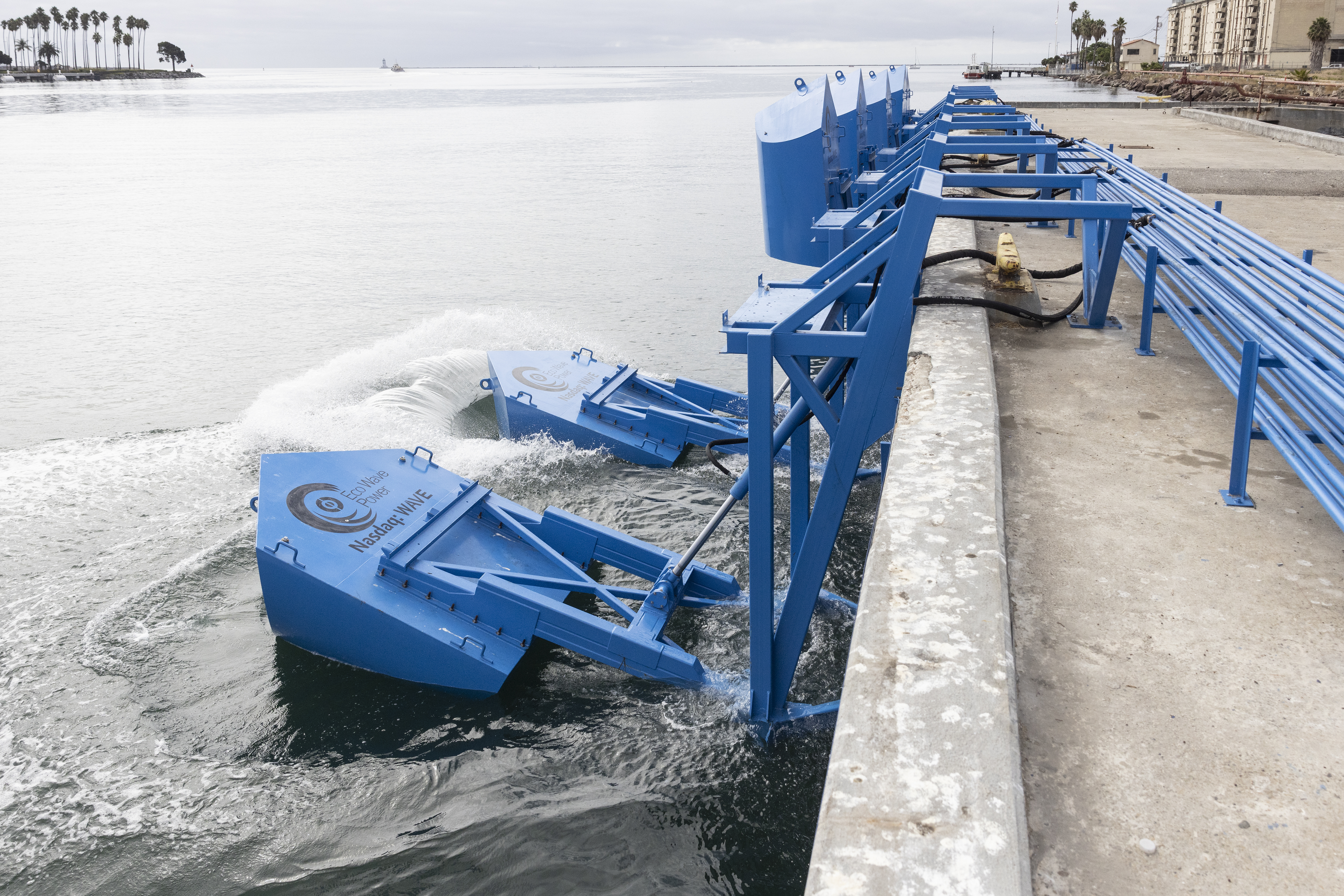General Discussion
Related: Editorials & Other Articles, Issue Forums, Alliance Forums, Region ForumsFirst onshore wave energy project in the U.S. launches in Los Angeles

Along a rocky wharf at the Port of Los Angeles on Tuesday, seven blue steel structures bobbed in the gentle wake of a Catalina Island ferry. The bouncing floaters marked a moment for clean energy — the first onshore wave power project in the country.
The floaters belong to Eco Wave Power, a Swedish company behind the pilot project located at AltaSea, a nonprofit ocean institute at the port. They harness the natural rise and fall of the ocean to create clean electricity 24 hours a day.
The pilot project will generate a modest 100 kilowatts of power — enough for about 100 homes — but company officials said the ultimate goal is to install steel floaters along the port’s 8-mile breakwater to generate about 60 megawatts of power, or enough for about 60,000 homes.
Such an achievement could be replicated along other parts of the U.S. coastline, according to Inna Braverman, Eco Wave Power’s co-founder and chief executive. She noted that the U.S. Energy Information Administration estimates that wave power has the potential to provide more than 60% of the country’s energy needs.
https://www.latimes.com/environment/story/2025-09-10/the-first-onshore-wave-energy-project-in-the-u-s-launches-in-los-angeles
Takket
(23,200 posts)muriel_volestrangler
(104,609 posts)but I can't see how it copes with the variation in sea level from the tides (no obvious explanation from their site: https://www.ecowavepower.com/ ). The pivot point looks fixed in the pictures. Anyone know what happens? Is it restricted to small-tide locations, or can the pivot move up and down somehow?
Disaffected
(5,867 posts)it looks like they can accommodate a quite wide range of water level. Enough to allow for tides, I dunno?
muriel_volestrangler
(104,609 posts)so what you have to accommodate can be quite different (as for the Bay of Fundy ... )
Disaffected
(5,867 posts)installing longer stroke cylinders pretty much any tidal height excursions could be accommodated. Or, ratchet the whole thing up and down.
It's an intriguing idea.
Wounded Bear
(62,912 posts)It seems to me that tidal variation could be built in on later models.
Just spitballing, but my experience as an engineer tells me that they are using this as a proof of concept model, and additional features will roll out in future installations.
hunter
(39,879 posts)Unfortunately, the only way to quit fossil fuels is to quit fossil fuels. Quitting fossil fuels is a lot like quitting smoking. Cutting a few cigarettes out of your two-pack-a -day habit by vaping or chewing a stick of nicotine gum doesn't make you a non-smoker.
Another problem with projects like this is that they can't produce electricity continuously or on demand thus they can't displace fossil fuels entirely, which is what we need to do. The amount of batteries of other energy storage required to make these kinds of "renewable energy" available as needed is completely ludicrous. These projects are not economically viable without fossil fuel backup. Usually this fuel is natural gas. Overall batteries waste energy but are useful because they allow fossil fuel plants time to fully power up when a renewable energy source drops out. (A certain number of gas power plants are kept running continuously to stabilize the grid even when renewable energy is at its maximum. An unstable grid results in massive power outages like Spain recently suffered.)
This is how the grid works in California -- we have lots of renewable energy, battery backup of around a hundred minutes, and gas picking up the load whenever the sun isn't shining, the wind isn't blowing, or in this case, the ocean is calm.
You can watch the California grid in action here:
https://www.caiso.com/todays-outlook/supply
and see its performance for the last 12 months here:
https://app.electricitymaps.com/zone/US-CAL-CISO/12mo/monthly
If California was willing to build nuclear power plants we could shut down our natural gas power plants entirely, reduce our greenhouse gas emissions substantially, stop trashing our wild places with wind turbines and solar panels, and not bother with Rube Goldberg energy projects such as this.